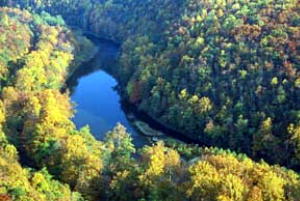LOGGING COULD BE TRIPLED IN WV'S MON FOREST - State's Million Acre Treasure At Risk

Spice Run Proposed Wilderness Area
Photo by Jonathan Jessup - courtesy of www.wvwild.org
By Bob Weaver
Logging in WVs Monongahela National Forest could soon be tripled under a Bush administration plan to increase logging, supposedly to create "Healthy Forests."
Bush's "Healthy Forest" plan is directed toward harvesting, not the preservation of primitive areas, the goal of America's early conservationists.
Conservation groups say the administration's management plan for the West Virginia's million-acre Mon National Forest would open thousands of acres of previously protected roadless areas to logging.
West Virginia's world-class hunting, fishing and outdoor recreation areas are at risk.
The Coalition has issued a statement asking people to join its efforts to protect existing roadless areas, safeguard remote wildlife habitat and recommend wilderness designations.
"The new draft plan is a major step backward from our current management plan, a plan which we West Virginians fought very hard to get the last time around, and one that has been very well-received over the past 19 years," said Mary Wimmer, a volunteer with the West Virginia Sierra Club.
West Virginia's treasure "The Monongahela," was established in 1911 and stretches across 10 counties. It is the fourth-largest national forest in the Northeastern United States, and is within one day's drive of one-third of the nation's population.
The new plan would open all or parts of at least nine of the 16 back-country areas in the Monongahela to logging and road building.
The Forest Service proposal would triple both the acreage and volume of logging and raise the maximum size of clear-cuts from 25 acres to 40 acres.
The plan calls for maintaining the current list of 336,000 acres as suitable for timbering. But, the Forest Service proposed to increase the maximum annual timber sales to 63 million board feet per year. Last year, the agency's allowable sale quantity was listed as 16.7 million board feet.
That is a major increase.
Sales of timber in national forest generates millions of dollars for the government, money for logging operations, but only a small amount of the money is returned to operate and maintain the national forest.
The government is saying the trade-off is declaring a few more areas as protected wilderness areas.
Previous studies issued by the Forest Service showed 16 remote areas totaling 137,140 acres met federal wilderness guidelines. The Forest Service studied 11 of those in detail. The draft document issued last week listed four -- Cheat Mountain, Cranberry Expansion, Dry Fork and Roaring Plains West, totaling 27,700 acres as newly proposed wilderness areas.
Conservationists say the Bush administration is opening most of the nation's parks and reserves to extraction.